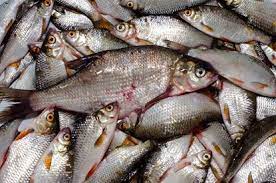Fish scraps might not have the most appealing aroma, but their benefits as a garden fertilizer are undeniable. They enrich the soil with essential nutrients, particularly nitrogen, and support sustainable waste management. However, to maximize these benefits and avoid potential risks, it’s essential to use fish scraps correctly. This article outlines four effective ways to incorporate fish scraps into your garden while maintaining safety and effectiveness.
What Fish Scraps Do for Your Garden
For centuries, gardeners have recognized the value of fish scraps in promoting healthy plant growth. Here’s a look at the key benefits and potential drawbacks of using fish scraps as a natural fertilizer.
Benefits
- Soil Enrichment: Fish scraps break down into rich organic matter, improving soil structure and fertility.
- Nitrogen Supply: Fish provides nitrogen at a ratio of approximately 4-1-1 (N-P-K), essential for healthy plant growth.
- Additional Nutrients: Fish scraps add trace minerals like iron, zinc, calcium, and potassium, which support soil health.
- Waste Reduction: Instead of sending fish waste to landfills, you can repurpose it for garden use, promoting sustainability.
Disadvantages
- Pathogens: Raw fish can contain harmful bacteria that might contaminate crops if not managed properly.
- Parasites: Fish scraps may carry parasites that can infect the soil and affect future crops.
- Pest Attraction: The strong smell of decomposing fish can attract raccoons, possums, and household pets.
- Heavy Metals: Fish can contain heavy metals, like mercury, which may enter your garden’s ecosystem if not monitored.
Where to Source Fish Scraps
If you’re planning to use fish scraps, it’s crucial to obtain them from safe, sustainable sources. Avoid using whole fish—instead, opt for inedible parts like heads, bones, and organs. This approach prevents waste while minimizing the risk of pollution and contamination.
Should You Buy Commercial Fish Fertilizer?
While homegrown fish scraps have many benefits, commercial fish fertilizers are a safer alternative. These products, such as fish emulsion, fish meal, and fish hydrolysate, are processed to eliminate pathogens. They’re widely available, easy to use, and come in liquid or granular form, making them a practical choice for many gardeners.
Four Methods to Use Fish Scraps in Your Garden
Here are four proven ways to use fish scraps effectively and safely:
1. Bury Fish Scraps Under Plants
Burying fish scraps is a traditional method rooted in Indigenous farming practices. Here’s how to do it effectively:
- Choose the Right Plants: This method works well with fruit-bearing plants like tomatoes and cucumbers. Avoid using it with root crops like carrots or potatoes.
- Bury Deep: Dig a hole 12 to 24 inches deep to bury the fish scraps. This depth prevents odors and deters pests.
- Natural Decomposition: Fish scraps break down relatively quickly, leaving only clean bones behind. The decomposition provides plants with a slow, steady nutrient supply.
2. Blend Fish Scraps into a Fertilizer Mixture
Blending fish scraps with water creates a DIY liquid fertilizer, but it’s not without challenges:
- Odor Control: Blended fish scraps have a strong smell that may attract pests. Consider sealing the mixture in a container during decomposition.
- How to Apply: Mix the fish slurry into your soil, but keep in mind that the smell may linger.
- Decomposition Speed: This method accelerates decomposition, allowing plants to access nutrients faster than buried fish.

3. Make Your Own Fish Emulsion
Fish emulsion is a liquid fertilizer made from decomposed fish parts. Here’s how to make it at home:
- Materials Needed: Fish scraps, sawdust, a 5-gallon bucket with a lid, unsulfured molasses, and water.
- Preparation Steps: Mix fish scraps and sawdust in a 50:50 ratio. Add one cup of molasses and enough water to submerge the mixture. Stir daily for about two weeks.
- Application: Strain the liquid and dilute it (1 tablespoon per gallon of water) before watering your plants. The remaining solids can be reused for future batches.
4. Compost Fish Scraps
Composting fish scraps requires careful handling to avoid odors and pests:
- Central Placement: Place fish scraps in the center of the compost pile to mask odors and deter animals.
- Heat Management: To kill pathogens, the compost pile should reach 145°F (64°C) for at least five days, repeating the process three times.
- Nutrient Outcome: The compost will transform into rich humus, but it won’t significantly boost nitrogen content compared to traditional composting methods.
Conclusion
Using fish scraps in your garden can be a sustainable, nutrient-rich option if done with care. From burying them under plants to making fish emulsion, each method has its pros and cons. Proper handling reduces risks associated with pests, pathogens, and heavy metals. Whichever method you choose, your garden will benefit from the natural nutrients, resulting in healthier plants and a greener, more sustainable approach to waste management.
